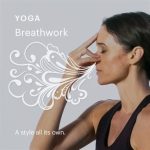Master the Essential Five Types of Yoga Breath for Better Practice and Wellbeing
Yoga is more than just physical postures; it’s a practice of holistic integration of the body, mind, and breath. At the heart of yoga lies the practice of Pranayama, the art of controlling your breath. Mastering various yoga breathing techniques not only enhances your yoga practice but also promotes mental clarity, emotional balance, and physical vitality. In this comprehensive guide, we’ll dive deep into the five essential types of yoga breath, exploring their techniques, benefits, historical context, and real-world applications.
Introduction
Breathing is often an unconscious act, but in yoga, breathwork is a powerful tool to improve focus, control the nervous system, and connect with the present moment. Each type of Pranayama brings unique benefits and can be incorporated into different aspects of life, from reducing stress to enhancing athletic performance.
In this guide, we’ll explore the five essential types of yoga breath: Ujjayi Breath, Kapalabhati Breath, Nadi Shodhana (Alternate Nostril Breathing), Bhramari Breath, and Sheetali Breath. By the end, you’ll have a clear understanding of how to integrate these techniques into your practice and daily life.
Key Concepts
- Pranayama: The yogic practice of breath regulation. Prana means life force, and Yama means control.
- Ujjayi Breath: A victorious breath that creates a gentle sound through the constriction of the throat.
- Kapalabhati Breath: A rapid, forceful exhalation followed by passive inhalation, meant to cleanse the body.
- Nadi Shodhana: Alternate nostril breathing to balance the body’s energy channels.
- Bhramari Breath: A humming breath that soothes the mind and reduces anxiety.
- Sheetali Breath: A cooling breath technique to regulate body temperature and calm the mind.
Historical Context
Breath control techniques have been used for centuries in both Hindu and Buddhist traditions. Pranayama is deeply rooted in the ancient yogic texts such as the Yoga Sutras of Patanjali and the Hatha Yoga Pradipika. Traditionally, Pranayama was viewed as a means to prepare the mind and body for meditation, as controlling the breath is believed to help control the mind.
Historically, breath practices have evolved to serve various purposes, from purifying the body to promoting spiritual enlightenment. In the modern world, these techniques have been adapted for therapeutic purposes and integrated into physical and mental health practices.
Current State Analysis
Today, breathwork is increasingly studied by scientists and integrated into healthcare, athletic training, and mental health therapies. Research shows that breath control can influence the autonomic nervous system, enhance oxygen delivery to tissues, and even modulate brainwave patterns.
From yoga studios to wellness retreats, breathwork has become an integral part of contemporary self-care routines. Athletes use breath techniques to enhance performance, while therapists utilize them to alleviate anxiety, depression, and PTSD symptoms.
Practical Applications
Understanding and practicing these five types of yoga breath can benefit various areas of life. Here’s how:
| Breath Technique | Practical Application |
|---|---|
| Ujjayi Breath | Ideal for calming the mind during asana practice and enhancing endurance during physical activities like running or swimming. |
| Kapalabhati Breath | Best for energizing the body in the morning, improving digestion, and detoxifying the respiratory system. |
| Nadi Shodhana | Great for balancing energy before meditation, calming the nervous system, and reducing stress. |
| Bhramari Breath | Perfect for reducing anxiety, quieting the mind, and improving concentration during work or study. |
| Sheetali Breath | Helpful for cooling down after a workout or in hot weather, and for managing emotions like anger. |
Case Studies
Studies conducted on the impact of Pranayama techniques have shown promising results. For instance, a 2017 study by the International Journal of Yoga demonstrated that Nadi Shodhana significantly reduces stress and improves heart rate variability. Athletes have reported better lung capacity and endurance when using Ujjayi Breath, while Kapalabhati is used in detox programs to help cleanse the lungs and improve digestive health.
Stakeholder Analysis
- Yoga Practitioners: Benefit from deeper, more mindful practice and emotional balance.
- Athletes: Utilize breath control to enhance performance and recovery.
- Healthcare Providers: Integrate breathwork into mental health treatment for stress and anxiety.
- Meditators: Use breath techniques to enter deeper states of meditation and mindfulness.
Implementation Guidelines
Here’s how you can implement each of the five breath types into your daily life:
- Ujjayi Breath: Start by practicing during yoga poses to enhance concentration and endurance. Gradually, incorporate this breath into daily stressful moments.
- Kapalabhati Breath: Best practiced in the morning for a burst of energy. Begin with just a few rounds and increase over time as your lungs adapt.
- Nadi Shodhana: Practice daily for 5-10 minutes, especially before meditation or bedtime, to reduce stress.
- Bhramari Breath: Integrate into moments of anxiety or overwhelm. Practice for 3-5 minutes to calm the mind.
- Sheetali Breath: Use during hot days or after intense exercise to cool the body and relax the mind.
Ethical Considerations
When teaching or practicing yoga breath techniques, it’s important to respect their cultural and spiritual origins. Breathwork is not just a tool for physical wellness but also a part of spiritual traditions that should be honored. Additionally, practitioners should be mindful of medical conditions like asthma, where some breath techniques may need to be modified.
Limitations and Future Research
While Pranayama has shown numerous benefits, it is not a one-size-fits-all solution. More research is needed to understand the long-term physiological impacts of these practices and how they can be tailored for individuals with respiratory conditions. Future studies should also investigate how these breath techniques can be adapted for specific populations, such as children, the elderly, or those with chronic illness.
Expert Commentary
Breathwork has the potential to transform not only your yoga practice but your entire life. According to experts like Dr. Sundar Balasubramanian, a pioneer in the scientific study of Pranayama, breath control has powerful implications for physical and mental health. It can be a simple yet profound practice that anyone can adopt, regardless of fitness level or experience. By mastering these five essential types of yoga breath, you unlock the ability to manage stress, improve focus, and enhance overall well-being.








